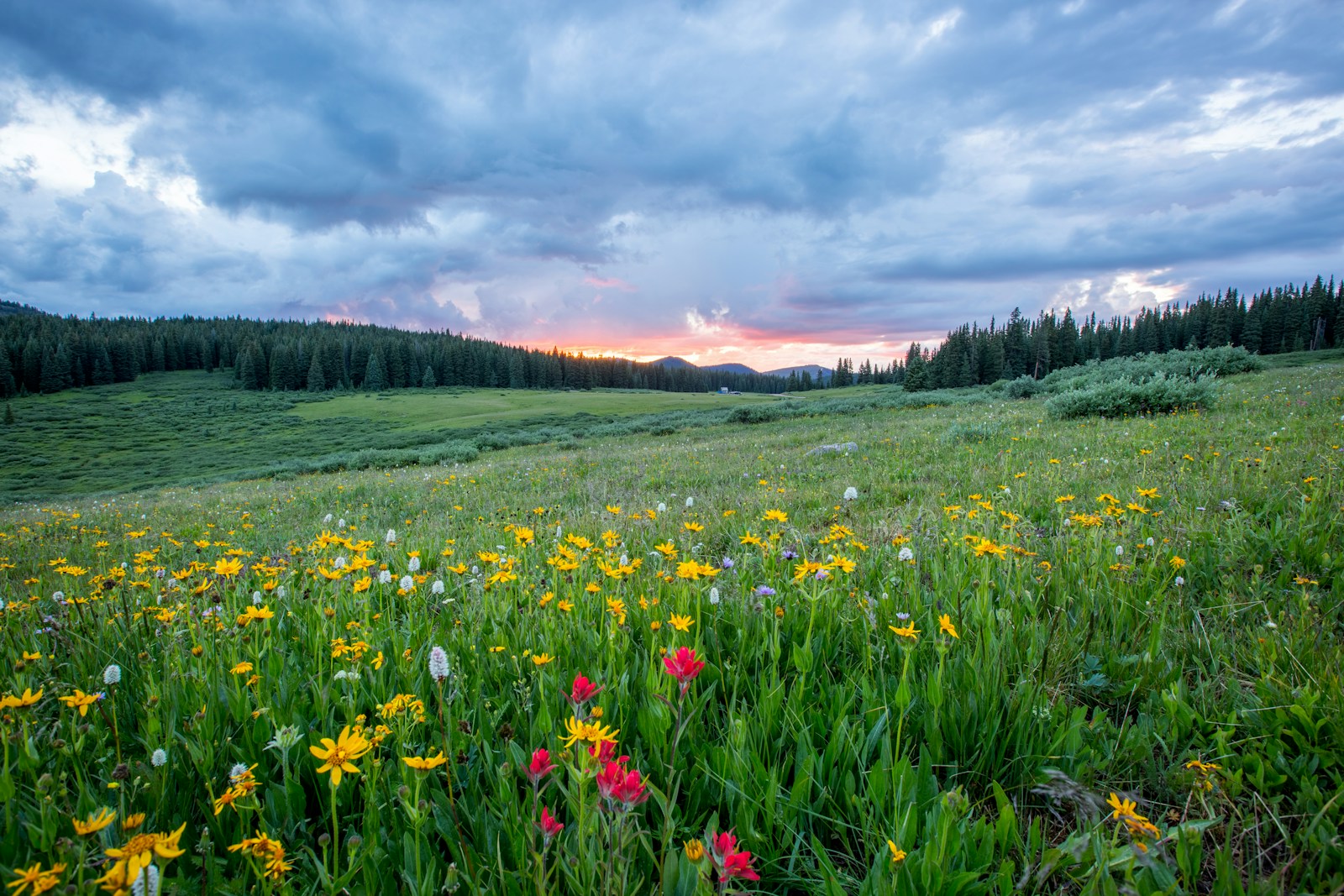Spring marks a magical transformation across America’s national parks, turning once-dormant landscapes into vibrant canvases of color. As winter recedes, these protected lands awaken with blooming wildflowers, fresh foliage, and renewed wildlife activity. This seasonal metamorphosis offers visitors a unique opportunity to witness nature’s artistry at its most expressive. From delicate desert blooms to sweeping mountain meadows draped in color, America’s national parks showcase spring’s glory in distinctive and breathtaking ways. Let’s explore the most spectacular spring displays across the country’s beloved national park system.
Great Smoky Mountains National Park: A Symphony of Wildflowers
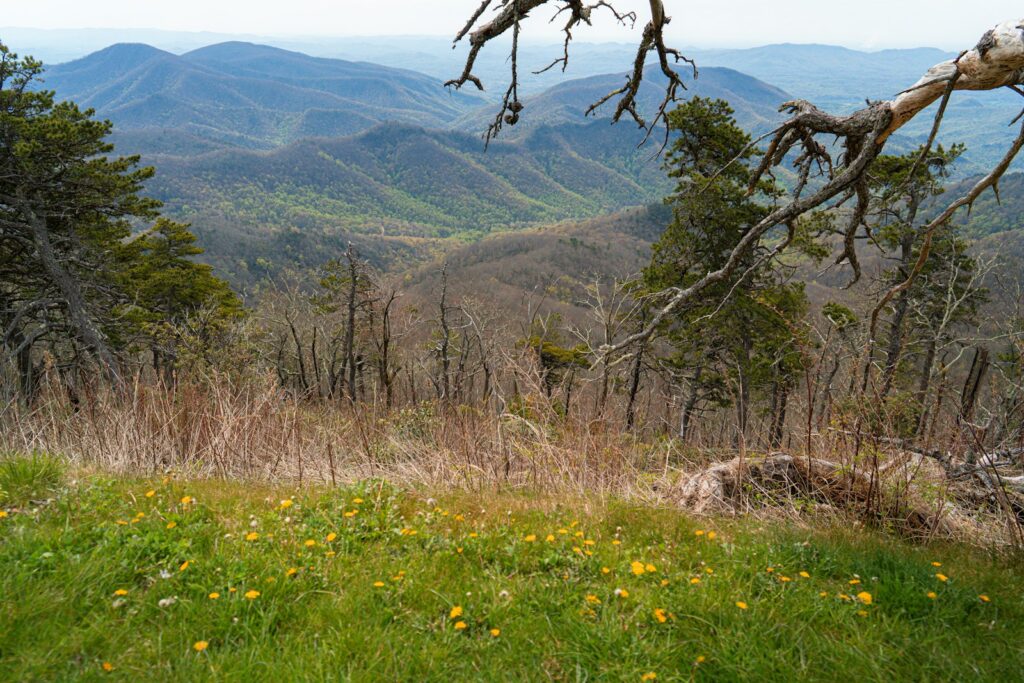
Great Smoky Mountains National Park, straddling Tennessee and North Carolina, earns its reputation as the “Wildflower National Park” with over 1,500 flowering plant species. Spring transformation begins in the lower elevations as early as February with tiny spring ephemerals like trillium, violets, and lady slipper orchids carpeting the forest floor in waves of white, purple, pink, and yellow. By mid-April, the display reaches its peak with spring beauty, phacelia, trout lily, and countless other species creating a kaleidoscope of color beneath the emerging tree canopy. The park’s annual Spring Wildflower Pilgrimage, typically held in late April, offers guided walks with botanists who help visitors identify the extraordinary diversity of blooms that make this UNESCO World Heritage site one of America’s premier spring destinations.
Shenandoah National Park: Virginia’s Blue Ridge Awakening
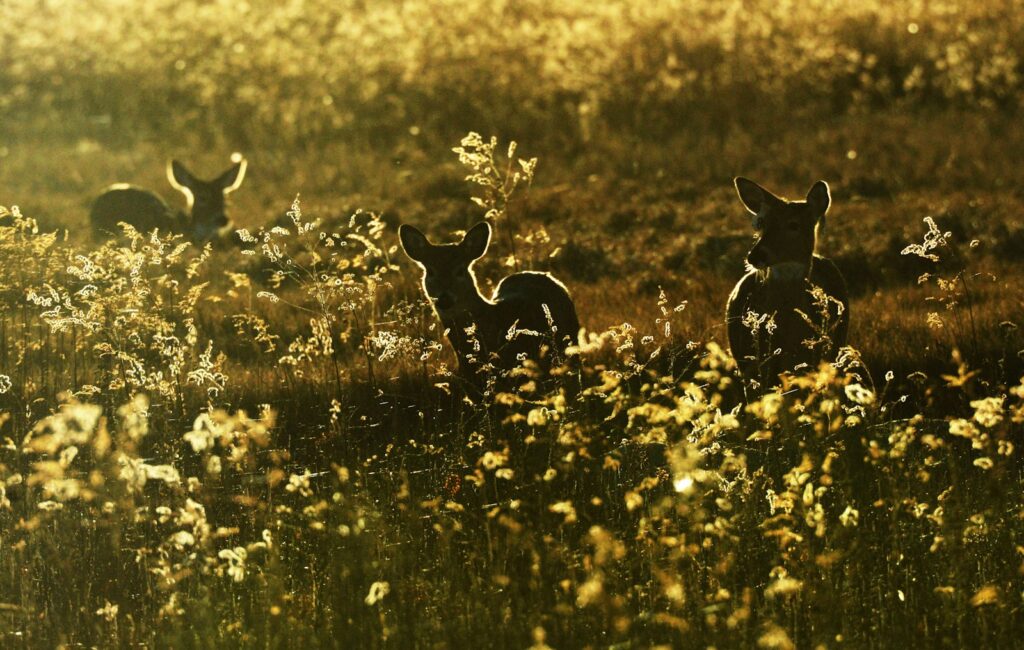
Shenandoah National Park transforms dramatically as spring advances up the Blue Ridge Mountains’ elevations. Beginning in March at lower elevations, the woodland floor erupts with hepatica, bloodroot, and spring beauty before giving way to trillium, wild geranium, and columbine by April. The park’s famous Skyline Drive becomes a gateway to this progression of color, with each bend revealing new floral displays against the backdrop of greening hardwood forests. By late April and early May, the park’s signature pink and white mountain laurel begins to bloom, followed by the spectacular flame azalea and its cousin, the delicate pink Catawba rhododendron. The park’s diverse microclimates mean visitors can often catch different stages of spring simultaneously by driving from lower to higher elevations along the 105-mile scenic route.
Joshua Tree National Park: Desert Spring Spectacular
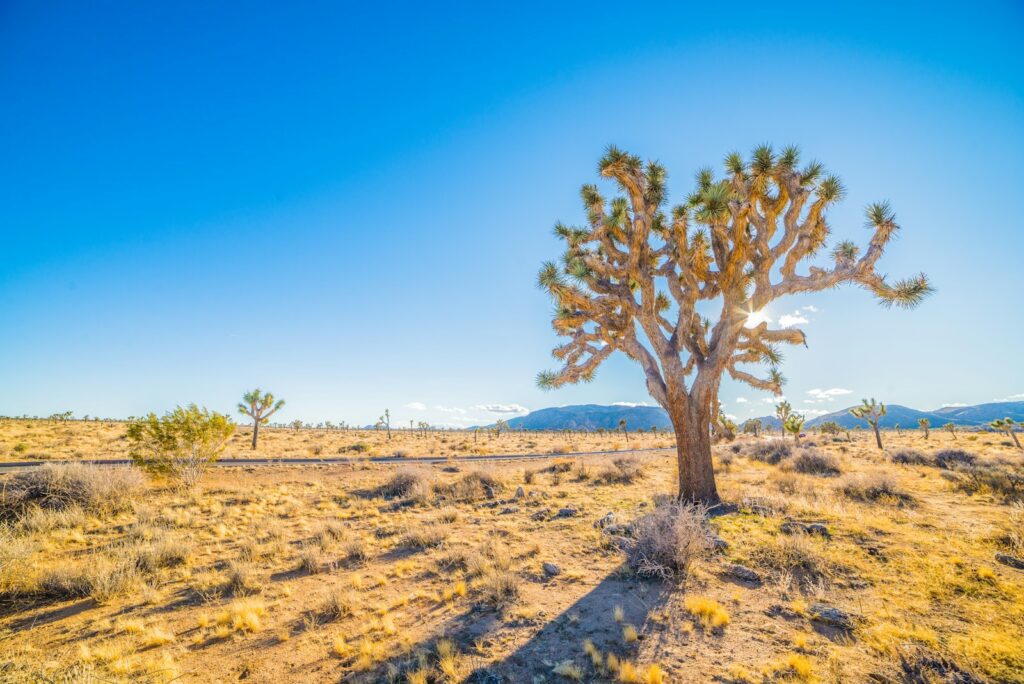
Joshua Tree National Park presents a fleeting but unforgettable spring display when conditions align perfectly in this Mojave and Colorado desert transition zone. After winter rains, typically between February and April, the seemingly barren landscape erupts with desert marigolds, desert dandelions, and the vivid magenta of beavertail cactus blooms. The park’s namesake Joshua trees produce cream-colored clusters of flowers, while ocotillo plants shoot up bright red flame-like blossoms at their tips. Unlike more predictable woodland displays, Joshua Tree’s spring bloom intensity varies dramatically year to year based on rainfall patterns, temperature, and timing. In exceptional “super bloom” years, following perfect precipitation conditions, entire valleys become carpeted with golden poppies, purple phacelia, and white desert primrose, transforming the arid landscape into a painter’s palette of unexpected color.
Death Valley National Park: The Miracle Bloom
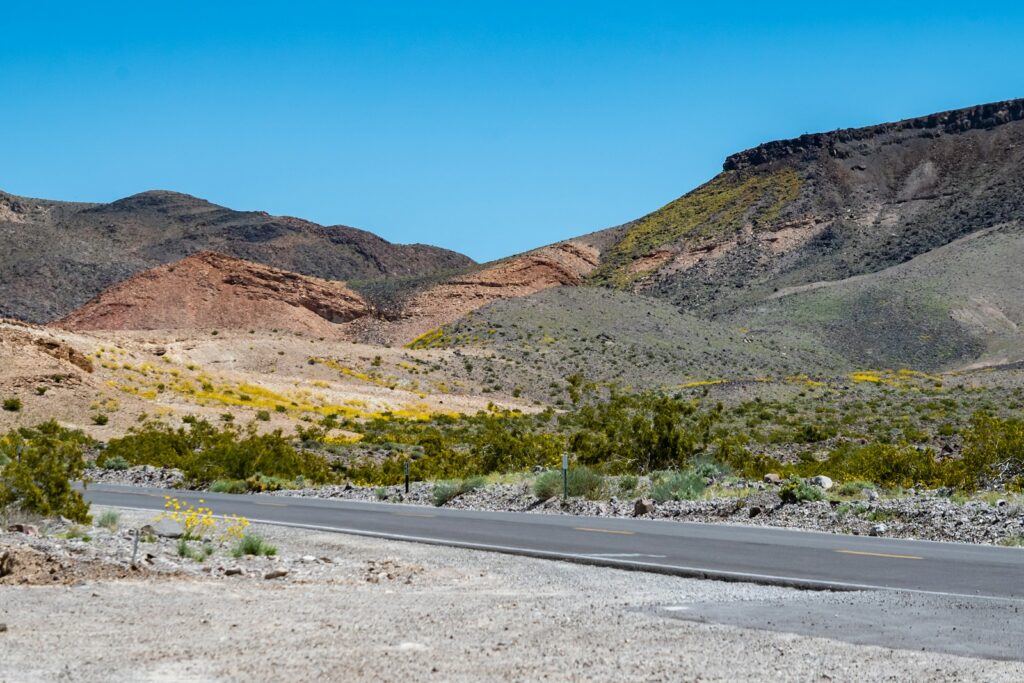
Death Valley National Park reveals perhaps the most dramatic spring transformation of any national park when conditions allow for rare “super blooms.” Despite being America’s hottest and driest national park, Death Valley can explode with wildflowers after perfect autumn and winter rains soak the desert floor. When these rare conditions occur, usually in February and March, the normally austere landscape becomes a sea of gold, purple, pink, and white as desert sunflowers, desert gold, phacelia, and desert five-spot blanket the valley floors and alluvial fans. The Badwater Basin, sitting 282 feet below sea level, can become ringed with delicate blooms, while higher elevations showcase different species and longer-lasting displays. These magnificent desert blooms are ephemeral – often lasting just weeks before the intensifying heat reclaims the landscape – making them all the more precious to witness.
Yosemite National Park: Waterfalls and Wildflower Meadows
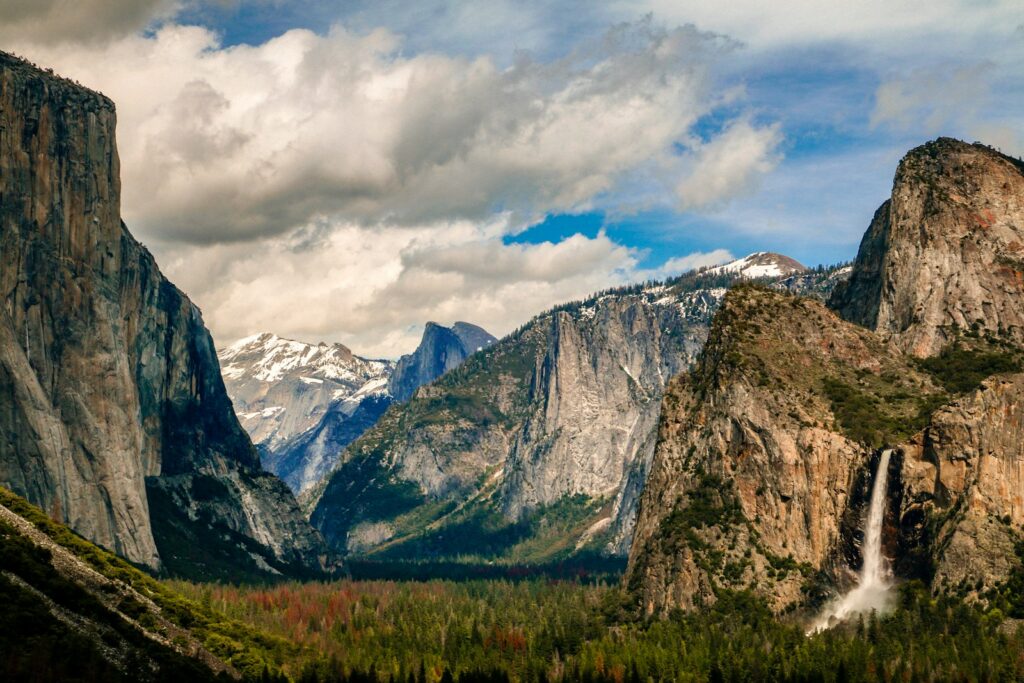
Yosemite National Park offers a double spring spectacle with its thundering waterfalls reaching peak flow as wildflower displays begin their seasonal progression. As winter snowpack melts throughout April and May, Yosemite Falls, Bridalveil Fall, and Nevada Fall transform into roaring torrents, their mist creating rainbow effects in the spring sunshine. Meanwhile, the park’s meadows gradually come alive with wildflowers – starting with lower elevation displays of poppies, lupine, and redbud trees along the Merced River. By late May and June, Yosemite Valley’s meadows showcase shooting stars, dogwood blossoms, and cow parsnip, while higher elevation meadows like Tuolumne and Crane Flat extend the display into July with pentstemon, columbine, and paintbrush. This combination of thundering waters and delicate blooms creates a sensory spring experience unmatched in the Sierra Nevada range.
Olympic National Park: Temperate Rainforest Renewal
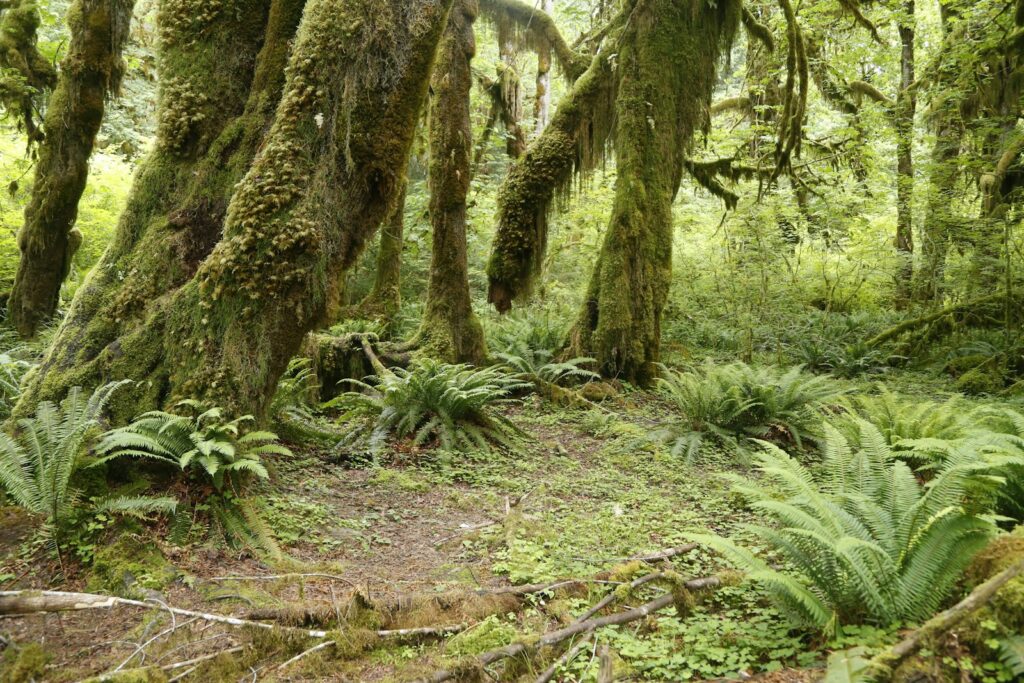
Olympic National Park showcases spring’s transformative power across remarkably diverse ecosystems, from coastal beaches to ancient rainforests and alpine meadows. In the park’s famous Hoh and Quinault rainforests, spring brings an intensification of the already-verdant landscape as moss and ferns unfurl new growth in vibrant shades of green beneath the towering cedars and spruce. Along the forest floors, trillium, bleeding heart, and salmonberry blossoms add splashes of white, pink, and magenta against the emerald backdrop. The park’s coastal areas see beach strawberry and shore lupine brightening the dunes, while the montane regions must wait until late May or June for their spring awakening. This sequential blooming across dramatically different ecosystems means visitors can effectively experience multiple phases of spring in a single day by traveling from the park’s coastline to its mountains.
Big Bend National Park: Cactus Country in Bloom
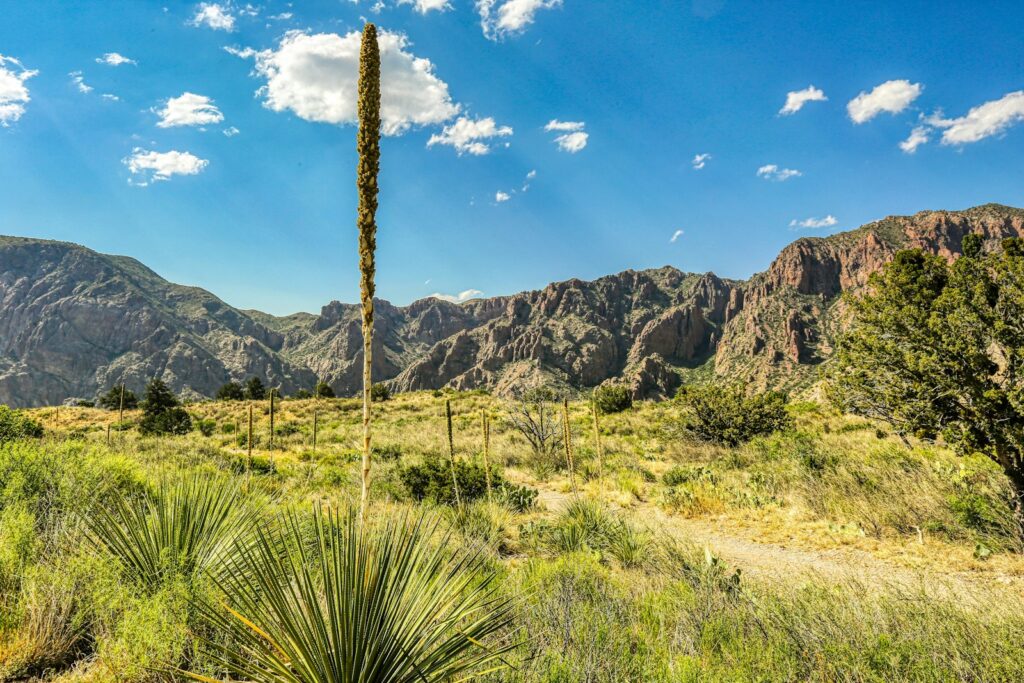
Big Bend National Park in Texas transforms from forbidding desert to floral showcase during its spring bloom season, typically peaking in March and April. The park’s diverse Chihuahuan Desert landscape becomes dotted with the striking pink flowers of prickly pear cactus, the yellow blooms of prickly pear and pitaya, and the spectacular crowns of century plants shooting up dramatic flowering stalks that can reach 15 feet in height. Along the Rio Grande corridor, the landscape bursts with color as redbuds, mountain laurel, and Mexican buckeye add their pink and purple hues to the palette. Higher elevations in the Chisos Mountains extend the blooming season into late spring with different species appearing as temperatures gradually warm. The contrast between the rugged desert terrain and the delicate blooms creates particularly striking photographic opportunities, especially in the golden light of early morning and late afternoon.
Mount Rainier National Park: Subalpine Meadow Majesty
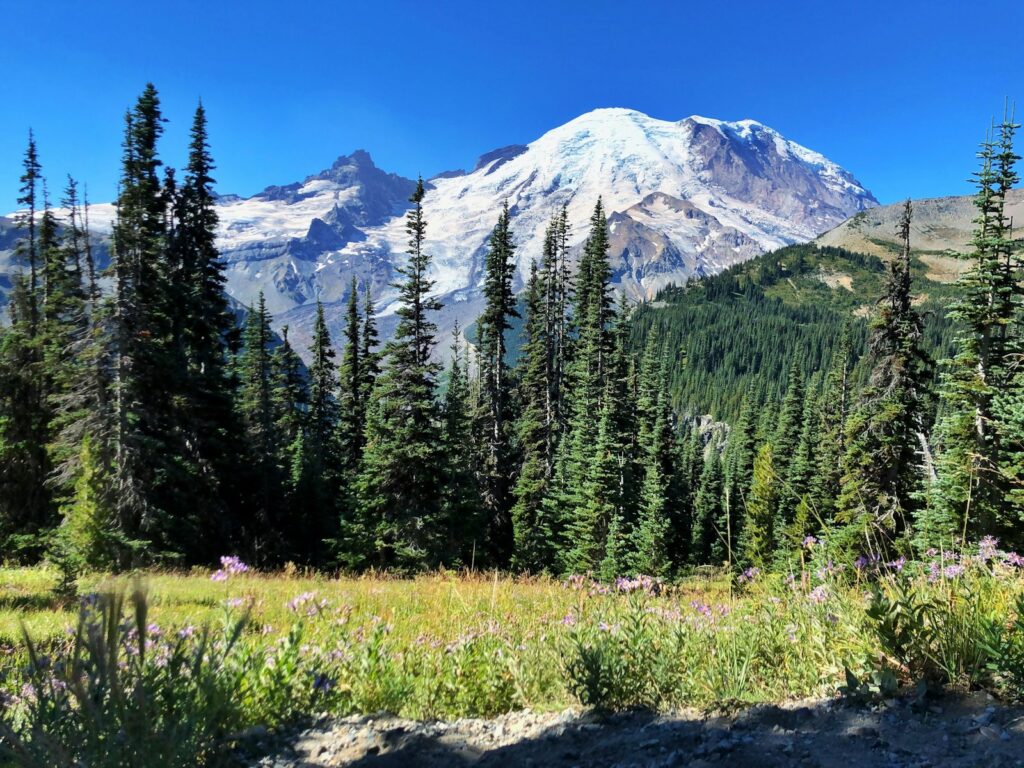
Mount Rainier National Park hosts one of the most spectacular wildflower displays in the entire national park system, though visitors must wait until late spring and early summer for the show to begin. The park’s famous subalpine meadows—Paradise, Sunrise, and Tipsoo Lake—transform into sweeping carpets of wildflowers as the snow recedes, typically beginning in late June and peaking in July and August. The display begins with avalanche lilies and western anemones pushing through melting snow patches, followed by lupine, paintbrush, beargrass, and dozens of other species creating a mosaic of color. These vibrant meadows set against the dramatic backdrop of Mount Rainier’s snow-capped peak create perhaps the most iconic wildflower scenes in America. The park service’s “Wildflower Report” helps visitors time their trips to catch the display at its peak, which can vary by weeks depending on the previous winter’s snowpack and spring temperatures.
Redwood National and State Parks: Ancient Giants and Woodland Blooms
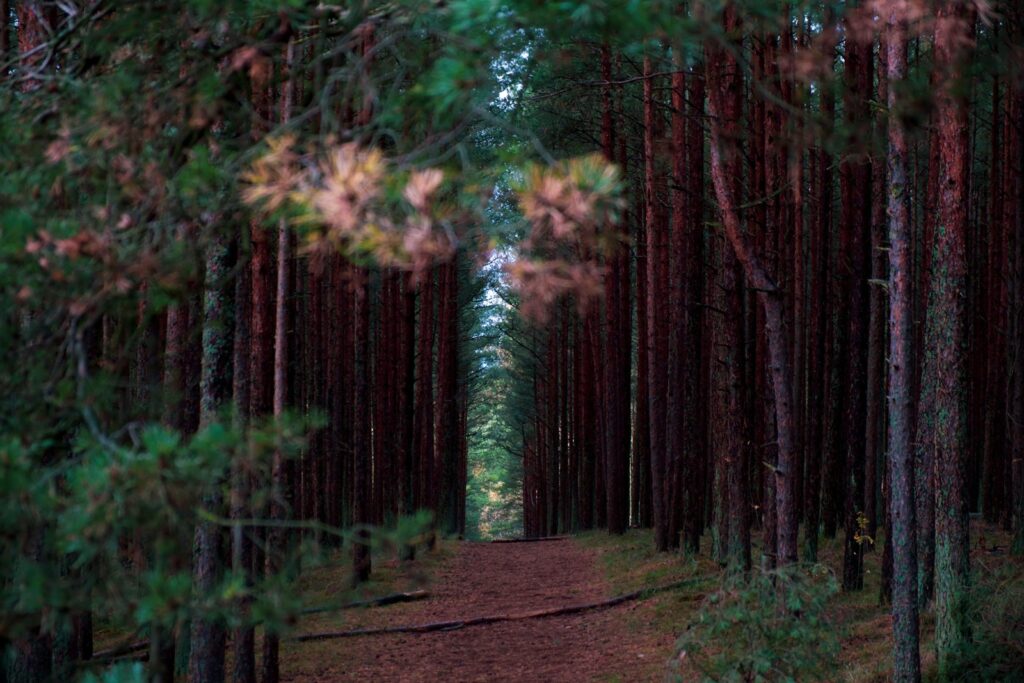
Redwood National and State Parks offer a unique spring experience as sunlight penetrates the forest canopy before summer fog season begins, illuminating the understory’s floral display. Beneath the towering ancient redwoods, the forest floor comes alive with trillium, rhododendron, azalea, and the delicate fairy lantern lily. The region’s famous rhododendrons reach their peak bloom in May, with their large pink and white blossoms creating dramatic contrast against the russet redwood trunks and verdant ferns. Along coastal sections of the parks, spring brings California poppies, lupine, and seaside daisies to the bluffs overlooking the Pacific. The increased spring rainfall also maximizes the flow of the parks’ many streams and waterfalls, adding another dimension to the sensory experience as visitors walk among these ancient giants during their seasonal awakening.
Mammoth Cave National Park: Kentucky’s Underground and Above-Ground Contrast
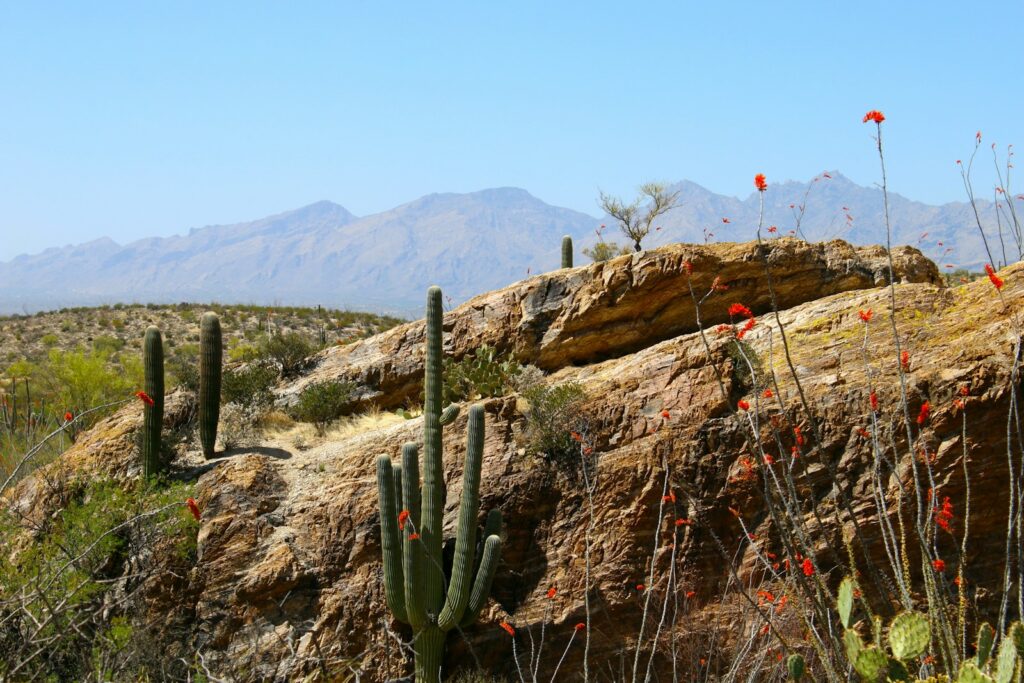
Mammoth Cave National Park presents a fascinating spring dichotomy with its unchanging subterranean world and explosively colorful surface landscapes. While the world’s longest known cave system maintains constant temperature and appearance year-round, the park’s 53,000 acres of protected Kentucky woodland and riverways undergo a dramatic spring transformation. Beginning in March, the forest floor erupts with spring ephemerals—delicate wildflowers that complete their life cycle before the tree canopy fills in. Virginia bluebells, trout lilies, celandine poppies, and Dutchman’s breeches create carpets of color, followed by the emergence of flowering dogwoods and redbuds that add a middle canopy of white and pink. This above-ground explosion of life creates a striking contrast for visitors who can experience both the timeless underground world and the vibrant seasonal rebirth in a single visit, with the Green River valley offering particularly scenic concentrations of spring color.
Bryce Canyon National Park: Painted Desert and Blooming Plateaus
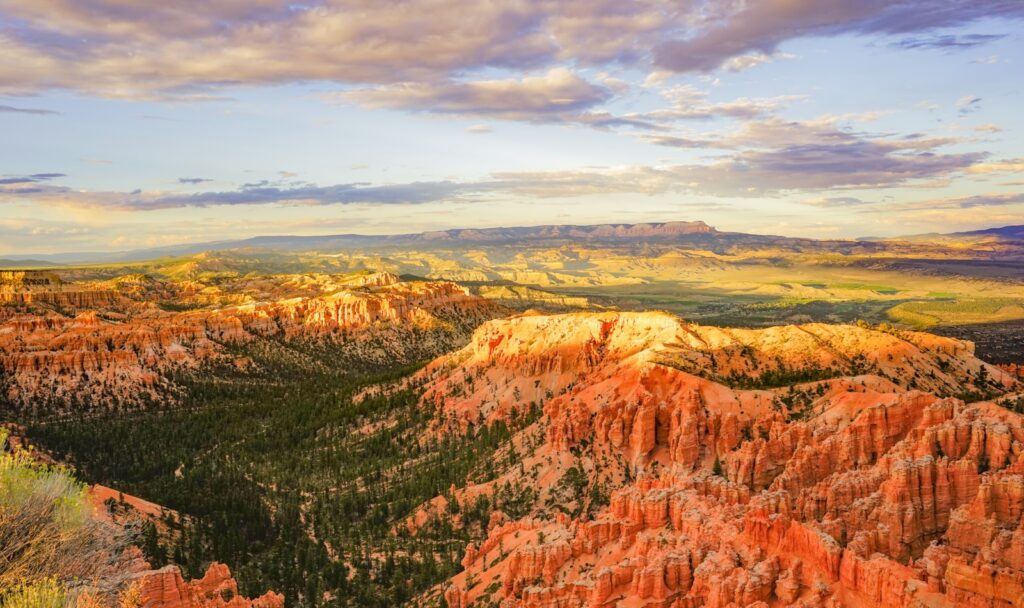
Bryce Canyon National Park undergoes a remarkable spring transformation as warmer temperatures reach its high plateau location. The park’s famous hoodoos—weathered spires of red, orange, and pink rock—gain an additional dimension of color as wildflowers begin to dot the landscape between April and June. The contrast between the brilliant yellow of rabbitbrush and goldenweed, the deep blue of Rocky Mountain iris, the magenta of prickly pear cactus blooms, and the multicolored rock formations creates a photographer’s paradise. The park’s varying elevations, ranging from 8,000 to 9,000 feet, create a progression of blooming periods, with flowers typically appearing at lower elevations first before working their way upward with the warming temperatures. Spring visitors also benefit from comfortable daytime temperatures ideal for hiking among the hoodoos, with the added bonus of smaller crowds compared to the peak summer season.
Rocky Mountain National Park: Alpine Spring Awakening
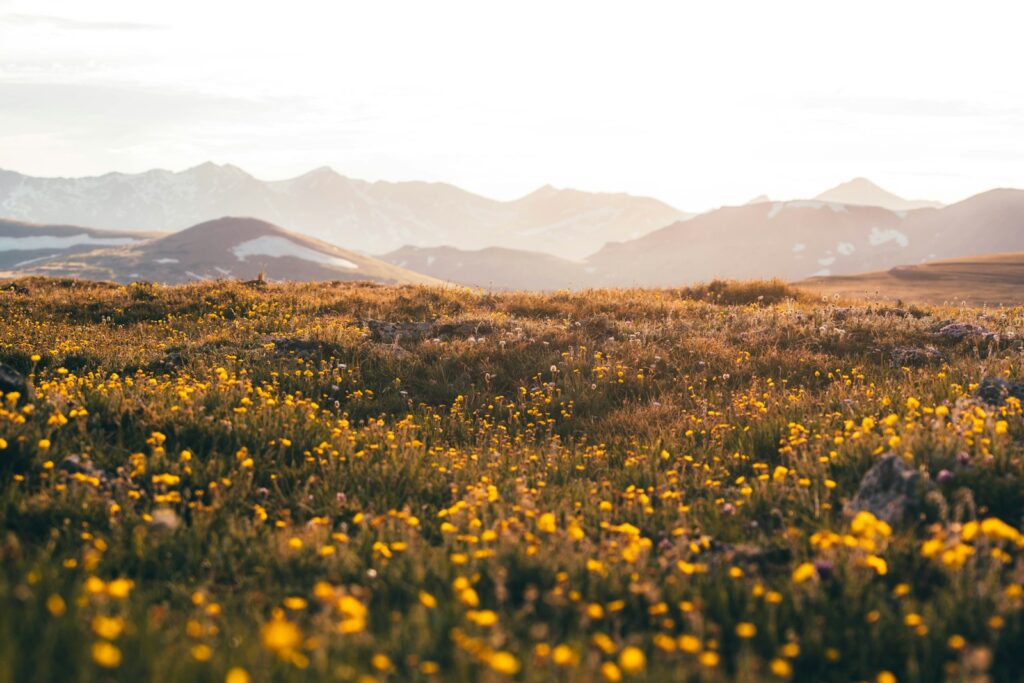
Rocky Mountain National Park experiences a dramatic but delayed spring transformation owing to its high elevation across the Continental Divide. While lower elevations begin showing signs of spring in April and May with pasqueflowers, marsh marigolds, and spring beauty dotting meadows and aspen groves, the park’s highest regions remain snow-covered until June. This creates a fascinating progression of spring that visitors can track by driving the famous Trail Ridge Road (weather permitting) from the montane ecosystem at around 8,000 feet to the alpine tundra above 11,000 feet. By June and early July, the park’s subalpine meadows burst with colorful displays of columbine (Colorado’s state flower), lupine, paintbrush, and globeflower. Even the seemingly barren alpine tundra reveals its spring secrets with miniature wildflowers like alpine forget-me-nots, alpine sunflowers, and sky pilots creating tiny but intense carpets of color between the melting snowfields.
Planning Your Spring National Park Visit
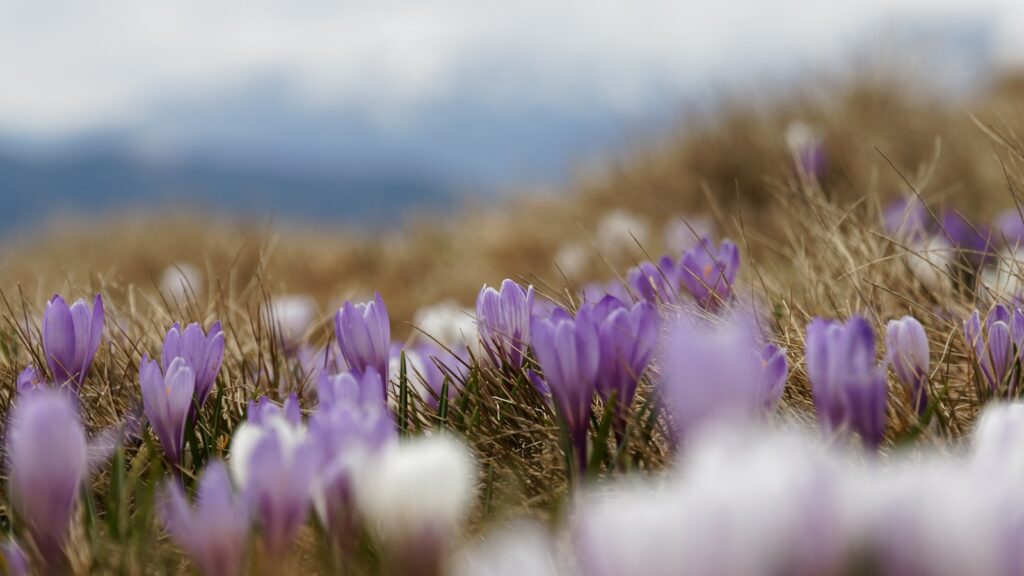
Timing your visit to catch peak spring displays requires research and flexibility, as bloom times vary based on elevation, latitude, and yearly weather patterns. National Park Service websites often provide “bloom reports” or phenology updates to help visitors track the progression of spring. Consider contacting visitor centers directly before your trip, as rangers can provide the most current conditions and recommended viewing areas. Weather during spring can be unpredictable in many parks, so packing layers and rain protection is essential even when forecasts look favorable. Photography enthusiasts should plan for early morning or late afternoon visits when the light brings out the richest colors and contrast in floral displays. Finally, practice responsible viewing by staying on designated trails and never picking flowers—remember that these ephemeral displays need to complete their full life cycle to return the following year.
Spring’s colorful transformation of America’s national parks offers visitors a powerful reminder of nature’s resilience and beauty. From the desert super blooms of Death Valley to the subalpine meadows of Mount Rainier, these seasonal displays provide not just visual splendor but a deeper connection to the natural rhythms that have shaped these landscapes for millennia. Whether you’re a dedicated botanist, a photography enthusiast, or simply someone seeking renewal in nature’s most vibrant season, these springtime spectacles in our national parks offer experiences that will remain vivid in memory long after the last petals have fallen.

